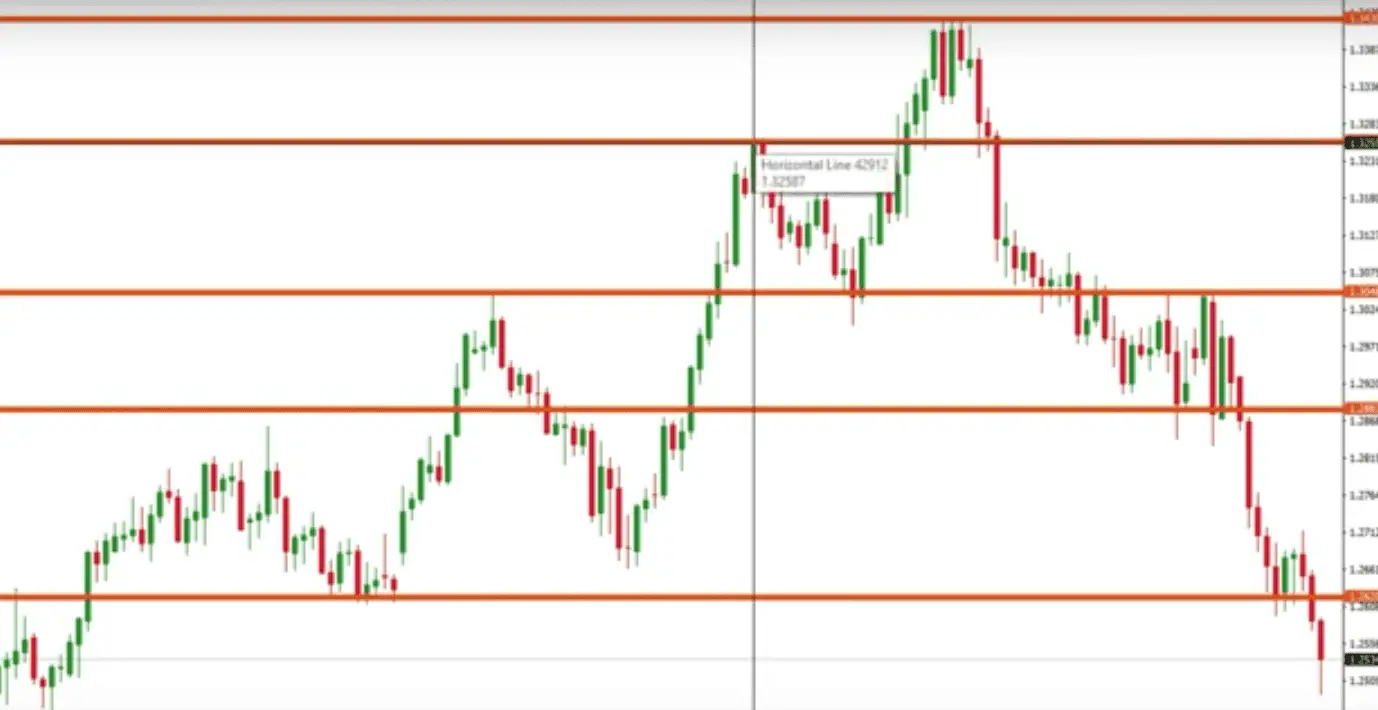Table of Contents
Understanding price action and placing an effective stop loss are fundamental to long-term trading success. Many traders seek a secret strategy or shortcut to consistent profits, but mastering these basics is the cornerstone of trading success.
Check my video:
The Importance of Stop Loss in Trading
Stop loss is not just a protective tool but a strategy determining how well you manage your risk. A poorly placed stop loss can lead to unnecessary losses, while a well-calculated stop loss enhances profitability by allowing your trade to develop and reducing the likelihood of being stopped prematurely.
Identifying Key Price Levels
Key price levels, such as support and resistance zones, are critical in price action trading. These levels often act as reaction points in the market. On a daily chart, for instance:
- Support: A price level where demand is strong enough to prevent the price from declining further.
- Resistance: A price level where selling pressure prevents the price from increasing further.
To identify these levels:
- Analyze the historical price chart.
- Look for recurring levels where the price has reversed or consolidated in the past.
- Confirm levels using multiple timeframes to ensure consistency.
The Role of Reaction Levels in Stop Loss Placement
Key price levels often result in market reactions such as bounces or false breakouts. Here’s how these reactions influence stop-loss placement:
- False Breakouts: Markets often break key levels temporarily before reversing. For example:
- The price may break below a support level but quickly recover, turning the move into a false breakout.
- If your stop loss is placed too close to the level, the false breakout may trigger it, resulting in a loss.
- Choppy Markets: In volatile conditions, prices may fluctuate around support or resistance levels, making tight stop losses particularly vulnerable.
Calculating the Optimal Stop Loss
Daily Average Range (ATR) Approach
The daily average range measures the average price movement over a day and can serve as a benchmark for setting stop losses:
- Standard Rule: Place your stop loss at least one daily ATR away from the entry point or the critical price level. This provides a cushion for market fluctuations.
- Half ATR: For short-term trades, a stop loss of half the daily ATR can be considered, but it increases the risk of being stopped by false moves.
Avoiding Tight Stops
Traders often make the mistake of placing stops just 10–20 pips away from the entry point, especially in high-volatility conditions. This approach is risky because:
- Minor price fluctuations can easily hit the stop loss.
- Many profitable trades are cut short prematurely.
Instead:
- Widen your stop loss to include some margin for market noise.
- Adjust the trade size to maintain an acceptable risk level.
Practical Example: GBP/USD on a Daily Chart

- Identifying Key Levels:
Suppose you identify a critical resistance level of 1.2850 based on historical price action. This level has acted as resistance multiple times over the past decade. - Placing the Stop Loss:
- If entering a short position near 1.2850, place the stop loss above the highest high or at least one daily ATR above the resistance level.
- This ensures protection from false breakouts while providing enough room for the trade to develop.
- Risk-Reward Ratio:
- Aim for at least a 1:2 risk-reward ratio. For example, if your stop loss is 50 pips, your target should be at least 100 pips away.
Adapting to Different Timeframes
While the principles remain the same, the specifics of stop loss placement vary by timeframe:
- Lower Timeframes (e.g., 1-hour, 30-minute):
- Price movements are more volatile and less predictable.
- Use shorter ATR-based stop losses, but adjust for false breakout tendencies.
- Higher Timeframes (e.g., daily, weekly):
- Price levels are more reliable.
- More comprehensive stop losses are required due to more significant market moves.
Common Mistakes in Stop Loss Placement
- Over-reliance on Tight Stops:
Tight stops often result in frequent losses due to minor market fluctuations. - Ignoring Market Context:
Placing stops without considering the current market conditions (trend, volatility, or economic events) can lead to poor outcomes. - Underestimating Volatility:
Volatile markets require more comprehensive stop losses to accommodate more significant price swings.
Adjusting Strategies for 2025
As markets evolve, adapting trading styles and stop-loss strategies is crucial:
- Swing Trading: Traders focusing on higher timeframes (e.g., daily or weekly) often benefit from broader stop losses. This approach reduces the noise and allows trades to capture more significant market moves.
- Short-term Trading: If you prefer shorter timeframes, consider using tighter stops, but be prepared for a higher frequency of stop-outs. Optimize this by focusing on highly liquid markets during peak trading hours.
Conclusion
Mastering stop-loss placement is an art and science. By incorporating daily ATR, respecting key price levels, and adapting to market conditions, traders can minimize losses and maximize profitability. Whether you lean toward swing trading or short-term strategies, always prioritize sound risk management to protect your capital and enhance trading confidence.
What’s your plan for trading in 2025? Will you focus on swing trading with broader stop losses or refine short-term strategies? Share your thoughts and strategies!
























